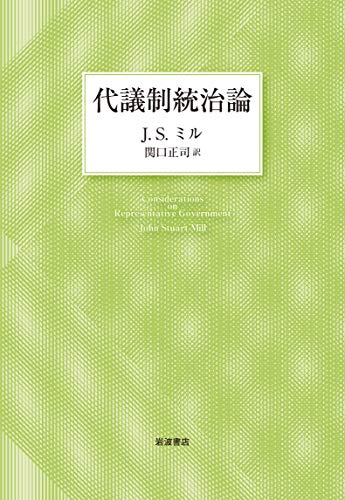1 0 0 0 OA 社会的迷惑行為の抑止策としての感謝メッセージ
- 著者
- 友野 聡子 Satoko Tomono 宮城学院女子大学 Miyagi Gakuin Women's University
- 雑誌
- 宮城學院女子大學研究論文集 = Bulletin of Miyagi Gakuin Women's University (ISSN:03867501)
- 巻号頁・発行日
- no.119, pp.51-56, 2014-12-31
1 0 0 0 OA 相づち表現「だから」の使い分け
- 著者
- 真山 季実子 Kimiko Mayama 宮城学院女子大学(卒業生) Miyagi Gakuin Women's University
- 雑誌
- 日本文学ノート (ISSN:03867528)
- 巻号頁・発行日
- no.47, pp.1-17, 2012-07-20
1 0 0 0 IR 戦後70年 日本経済の軌跡 : 日本経済の歩みとこれから
- 著者
- 田中 史郎 Shiro Tanaka 宮城学院女子大学 Miyagi Gakuin Women's University
- 出版者
- 宮城学院女子大学附属人文社会科学研究所
- 雑誌
- 人文社会科学論叢 (ISSN:0916913X)
- 巻号頁・発行日
- no.25, pp.47-61, 2016
1 0 0 0 短期地震予知VAN法の評価
- 著者
- 上田 誠也 Al-Damegh K.S. 吉田 均
- 出版者
- 地震予知総合研究振興会
- 雑誌
- 地震ジャ-ナル (ISSN:09125779)
- 巻号頁・発行日
- no.26, pp.34-43, 1998-12
- 著者
- Longquan REN Mohamed S. MEDAN Mariko OZU Chunmei LI Gen WATANABE Kazuyoshi TAYA
- 出版者
- THE SOCIETY FOR REPRODUCTION AND DEVELOPMENT
- 雑誌
- Journal of Reproduction and Development (ISSN:09168818)
- 巻号頁・発行日
- pp.0601130020, (Released:2006-01-16)
- 被引用文献数
- 20 29
The effect of induced cryptorchidism on testicular function and sperm motility was investigated. Bilateral cryptorchidism was created surgically in adult male rats (treated group), and sham-operated rats were used as a control group. Five rats from each group were sacrificed on days 1, 3, 5, and 7 after surgery. The percentage of motile spermatozoa began to decrease 1 day after the operation, followed by an abrupt decline 3 and 5 days later in cryptorchid rats. Furthermore, there were significant decreases in the other sperm motility parameters 5 days after inducement of cryptorchidism. In cryptorchid rats, plasma concentrations of LH, FSH, testosterone, and inhibin B were significantly lower than in the control group 1 day after the operation. Thereafter, plasma concentrations of LH, FSH, and testosterone gradually increased in the cryptorchid rats. On the other hand, plasma concentrations of inhibin B showed a further decline from day 3 after the operation onward. Concentrations of immunoreactive (ir)-inhibin, but not testosterone, in testicular interstitial fluid were remarkably increased until 3 days after surgery in the cryptorchid rats, and declined thereafter. Testicular response to human chorionic gonadotropin (hCG) for testosterone release was decreased in the cryptorchid rats compared with the control rats, indicating that heat stress to testes resulted in a reduction of the activity of Leydig cells and Sertoli cells. These results clearly indicate that heat stress to the testes resulted in a significant reduction of sperm activity within 3 days, and this was followed by changes in testicular endocrine function.
- 著者
- Arati S. Panchbhai Shirish S. Degwekar Rahul R. Bhowte
- 出版者
- Nihon University School of Dentistry
- 雑誌
- Journal of Oral Science (ISSN:13434934)
- 巻号頁・発行日
- vol.52, no.3, pp.359-368, 2010 (Released:2010-09-24)
- 参考文献数
- 45
- 被引用文献数
- 30 68
Diabetes is known to influence salivary composition and function, eventually affecting the oral cavity. We thus evaluated saliva samples for levels of glucose, amylase and total protein, and assessed salivary flow rate in diabetics and healthy non-diabetics. We also analyzed these parameters with regard to duration and type of diabetes mellitus and gender, and aimed to assess the interrelationships among the variables included in the study. A total of 120 age- and sex-matched participants were divided into 3 groups of 40 each; the uncontrolled diabetic group, the controlled diabetic group and the healthy non-diabetic group. Salivary investigations were performed using unstimulated whole saliva. Mean salivary glucose levels were found to be significantly elevated in both uncontrolled and controlled diabetics, as compared to healthy non-diabetics. There were significant decreases in mean salivary amylase levels in controlled diabetics when compared to healthy non-diabetics. Other than salivary glucose, no other parameters were found to be markedly affected in diabetes mellitus. Further research is needed to explore the clinical implications of these study results. (J Oral Sci 52, 359-368, 2010)
- 著者
- Frank JANSEN Waldemar BAUER Frédéric MASSON Jean-Marc RUAULT Jean-Claude WORM Emmanouil DETSIS Francois LASSOUDIERE Richard GRANJON Enrico GAIA Maria Cristina TOSI Simona FERRARIS Anatoly S. KOROTEEV Alexander V. SEMENKIN Alexander SOLODUKHIN Tim TINSLEY Zara HODGSON Christoph KOPPEL Lamartine Nogueira Frutuoso GUIMARÃES
- 出版者
- THE JAPAN SOCIETY FOR AERONAUTICAL AND SPACE SCIENCES
- 雑誌
- TRANSACTIONS OF THE JAPAN SOCIETY FOR AERONAUTICAL AND SPACE SCIENCES, AEROSPACE TECHNOLOGY JAPAN (ISSN:18840485)
- 巻号頁・発行日
- vol.14, no.ists30, pp.Pb_225-Pb_233, 2016 (Released:2017-02-08)
- 被引用文献数
- 5
The European Commission Horizon 2020 funded DEMOCRITOS project (2015-2017, see under democritos.esf.org) will be primary focused to prepare preliminary design of the ground, core and space demonstrators and their test benches for the mega-watt class nuclear electric space propulsion INPPS flagship (International Nuclear Power and Propulsion System). In addition programmatic, organizational and funding aspects for international cooperation related to INPPS realization are sketched. The new project includes partners from Europe, Russia and the Brazilian guest observer IEAv and is the follow-up of the mega-watt class nuclear electric propulsion European-Russian MEGAHIT project (www.megahit-eu.org). Europe already established the high power nuclear MEGAHIT and the low power nuclear (20 to 200 kW NEP) DiPoP (www.DiPoP.eu) roadmaps. Because Europe has started the implementations for INPPS flagship in the 2030-2040 timeframe, both roadmaps will be also described – from MEGAHIT the INPPS technology options, the launcher, assembly and system architecture, space mission requirements, communications and public support. In case of DiPoP it will be explained the survey of European capabilities, technical options, potential space missions and the public acceptance as well.
1 0 0 0 IR ラットの条件性抑制における阻止効果の再現
- 著者
- 山岸 厚仁 中島 定彦 廣野 翔太 三島 美緑 木本 琢海 記田 浩明 鹿瀬 大稀 松藤 未宇 酒井 太郎 賈 擎宇 橋本 侑希美 水江 春美 大久保 綾香 北野 孝太 佐藤 暢哉 Atsuhito Yamagishi Sadahiko Nakajima S. Hirono M. Mishima T. Kimoto H. Kida D. Shikase M. Matsufuji T. Sakai S. Ka Y. Hashimoto H. Mizue A. Okubo K. Kitano Nobuya Sato
- 出版者
- 関西学院大学心理科学研究室
- 雑誌
- 関西学院大学心理科学研究 = Kwansei Gakuin University, bulletin of psychological science research (ISSN:21876355)
- 巻号頁・発行日
- vol.45, pp.9-18, 2019-03
1 0 0 0 OA 醤油醸造業史研究の回顧と展望(竹浪祥一郎教授退任記念号)
- 著者
- 長谷川 彰 Akira Hasegawa 桃山学院大学経営学部 St. Andrew's University
- 雑誌
- 桃山学院大学経済経営論集 = ST. ANDREW'S UNIVERSITY ECONOMIC AND BUSINESS REVIEW (ISSN:02869721)
- 巻号頁・発行日
- vol.33, no.4, pp.29-54, 1992-03-01
- 著者
- Bose Kurethara S.
- 出版者
- THE EASTERN BUDDHIST SOCIETY
- 雑誌
- THE EASTERN BUDDHIST NEW SERIES = THE EASTERN BUDDHIST NEW SERIES (ISSN:00128708)
- 巻号頁・発行日
- vol.27, no.2, pp.145-156,
1 0 0 0 代議制統治論
- 著者
- J.S. ミル [著] 関口正司訳
- 出版者
- 岩波書店
- 巻号頁・発行日
- 2019
1 0 0 0 OA アメリカにおける同棲の問題 : アメリカ家族の研究
- 著者
- 野々山 久也 Hisaya Nonoyama 桃山学院大学 St. Andrew's University
- 雑誌
- 桃山学院大学人文科学研究 = THE JOURNAL OF HUMAN SCIENCES, St. Andrew's University (ISSN:02862700)
- 巻号頁・発行日
- vol.19, no.1, pp.33-65, 1983-04-05
1 0 0 0 Profiting from education : Japan-United States international educational ventures in the 1980s
- 著者
- Gail S. Chambers William K. Cummings
- 出版者
- Institute of International Education
- 巻号頁・発行日
- 1990
1 0 0 0 アフリカの宗教と哲学
- 著者
- ジョン・S・ムビティ著 大森元吉訳
- 出版者
- 法政大学出版局
- 巻号頁・発行日
- 1978
- 著者
- Philip S. Foner editor
- 出版者
- Greenwood Press
- 巻号頁・発行日
- 1976
1 0 0 0 IR ソジャーナー・トゥルースとフレデリック・ダグラスのキリスト教批判
- 著者
- 新免 貢 Mitsugu Shinmen 宮城学院女子大学 Miyagi Gakuin Women's University
- 出版者
- 宮城学院女子大学紀要編集委員会
- 雑誌
- 宮城学院女子大学研究論文集 (ISSN:03867501)
- 巻号頁・発行日
- no.110, pp.1-25[含 英語文要旨], 2010-06
- 著者
- MINORU KUNII SUSUMU S. SAWADA NAOFUMI YAMAMOTO YUKO GANDO HISASHI NAITO
- 出版者
- The Juntendo Medical Society
- 雑誌
- 順天堂醫事雑誌 (ISSN:21879737)
- 巻号頁・発行日
- pp.JMJ19-OA04, (Released:2019-12-13)
- 参考文献数
- 20
Objective: The purpose of this study was to evaluate the relationship of freestyle swimming performance between adolescence and adult Japanese top-class swimmers.Methods: The 234 males and 134 females ranked in the top 100 records of 50, 100, 200 and 400 m freestyle short-course performances of over 22 years old during 2016 to 2018 (latest TIME), and their season best performances during 2006 to 2017 were analyzed. All data were collected from the public database “Swimrecord.com” by Japan Swimming Federation. Performance maturity status was determined by the ratio of each age record to the latest TIME and the relationship between the latest TIME and each age record was evaluated. Also, the subjects were divided into the upper or lower group with reference to the latest TIME and the developmental changes of performance were compared between the groups.Results: The performance maturity status was higher in females than males at each age. The correlation between the latest TIME and each age record became gradually stronger from males aged 17 years and females aged 14 years, but there was no clear correlation in the previous records. There was no difference in developmental changes in performance between the upper and lower groups in both males and females.Conclusions: The longitudinal analysis of the swimming performance in the growth period reveals that the Japanese top-class swimmers show high performance before 12 years old and that the time to approximate peak performance appeared earlier in females than in males and the relationship is different depending on swimming distance.
1 0 0 0 書簡にみる伊沢修二と神津仙三郎(1) (<特集>生涯学習の研究)
- 著者
- 岡田 千歳 Chitose Okada 桃山学院大学教育研究所 St.Andrew's University Research Institute for Education
- 雑誌
- 桃山学院大学教育研究所研究紀要 = ANNALS, St. Andrew's University Research Institute for Education (ISSN:09169695)
- 巻号頁・発行日
- vol.7, pp.55-92, 1998-03-01
1 0 0 0 OA X線天文衛星代替機の現状
- 著者
- 田代 信 前島 弘則 戸田 謙一 R. Kelley L. Reichenthal J. Lobell R. Petre M. Guainazzi L. Angelini E. Costantini M. Edison 藤本 龍一 M. Grimm 林田 清 J-W. den Herder 石崎 欣尚 S. Paltani 松下 恭子 森 浩二 G. Sneiderman 竹井 洋 寺田 幸功 冨田 洋 XARM team
- 出版者
- 一般社団法人 日本物理学会
- 雑誌
- 日本物理学会講演概要集 73.1 (ISSN:21890803)
- 巻号頁・発行日
- pp.494, 2018 (Released:2019-05-13)




